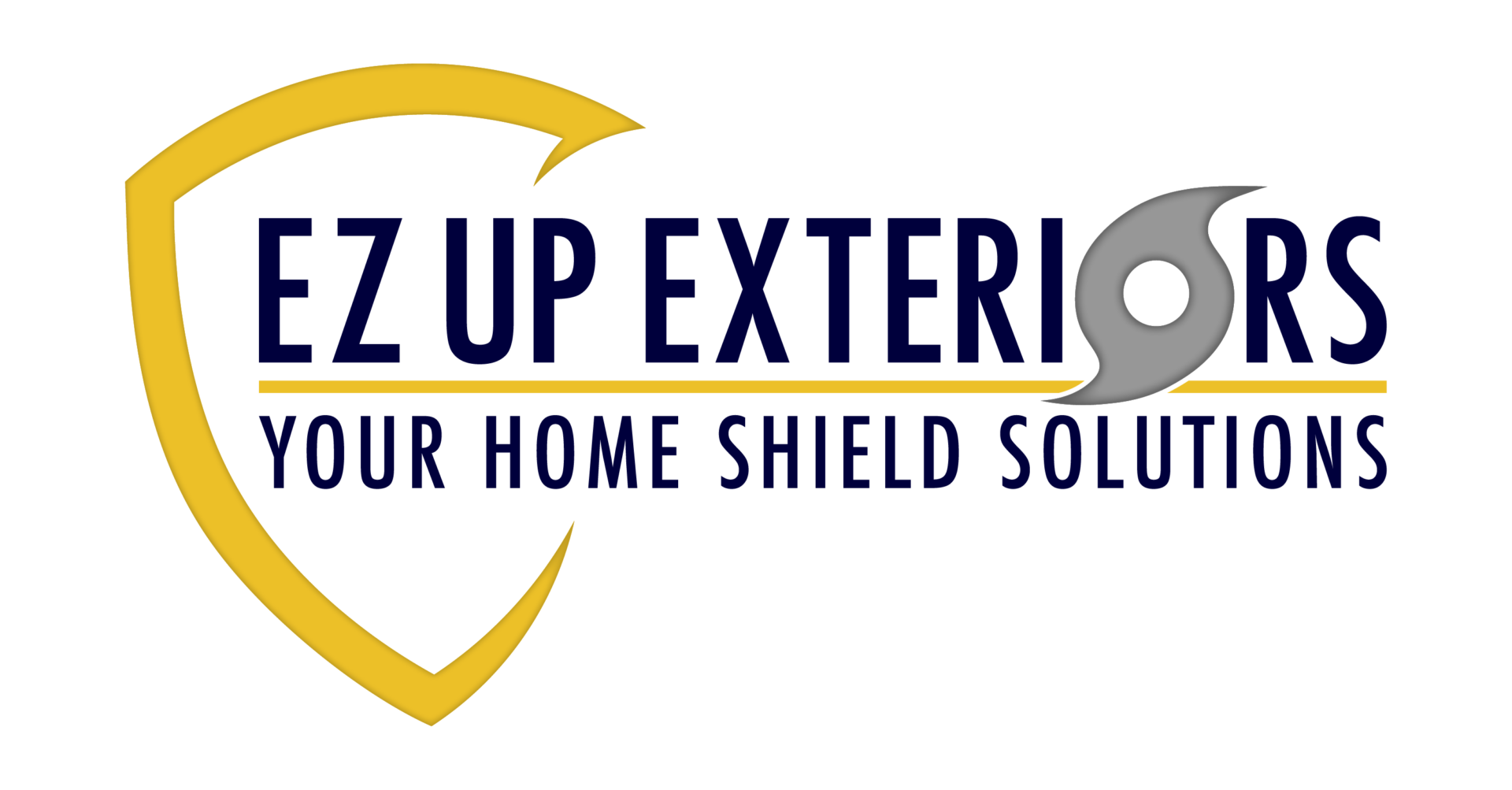In regions prone to hurricanes, safeguarding your home is not merely a precaution—it’s a necessity. The quest for effective, durable, and aesthetically pleasing storm protection has led many homeowners to consider various options. Among these, corrugated aluminum panels have emerged as a standout choice, blending modern design with robust security. This article delves into the multifaceted appeal of corrugated aluminum panels as hurricane shutters, exploring their structural benefits, aesthetic versatility, installation nuances, cost-effectiveness, and compliance with stringent building codes.
Understanding Corrugated Aluminum Panels
What Are Corrugated Aluminum Panels?
Corrugated aluminum panels are sheets crafted from aluminum, featuring a distinctive wave-like pattern known as corrugation. This design is not merely decorative; the corrugations enhance the panel’s structural integrity, enabling it to withstand significant forces. Traditionally utilized in industrial and agricultural settings for roofing and siding, these panels have been adapted for residential use, particularly as hurricane shutters, due to their strength and lightweight properties.
Historical Context and Evolution
The use of corrugated metal dates back to the 19th century, primarily in industrial applications. Over time, the inherent benefits of corrugated aluminum—such as resistance to corrosion and favorable strength-to-weight ratio—have been recognized in residential construction. The evolution from industrial material to residential safeguard reflects advancements in manufacturing and a growing emphasis on resilient building practices in hurricane-prone areas.
Advantages of Corrugated Aluminum Panels for Hurricane Protection
1. Superior Strength and Impact Resistance
The primary function of hurricane shutters is to protect windows and doors from the devastating effects of high winds and airborne debris. Corrugated aluminum panels excel in this regard. Their design allows them to absorb and dissipate impact energy effectively. Many of these panels are engineered to meet or exceed Miami-Dade County’s hurricane codes, among the most rigorous standards globally, ensuring they can withstand severe storm conditions.
2. Lightweight Nature Facilitates Handling
Despite their strength, aluminum panels are remarkably lightweight. This characteristic simplifies both the installation and removal processes, making it feasible for homeowners to manage their storm preparations without extensive assistance. The ease of handling reduces the time and labor typically associated with deploying heavier protective materials.
3. Corrosion Resistance Enhances Longevity
Aluminum’s natural resistance to corrosion is particularly beneficial in coastal regions, where salt-laden air can accelerate the deterioration of other materials. This resistance ensures that corrugated aluminum panels maintain their integrity and appearance over time, even in harsh environmental conditions, thereby extending their service life and providing long-term value.
4. Cost-Effectiveness Without Compromising Quality
When compared to alternatives like impact-resistant windows or motorized shutters, corrugated aluminum panels offer a more affordable solution without sacrificing protection. This cost-effectiveness makes them accessible to a broader range of homeowners, enabling more widespread adoption of effective hurricane defense measures.
5. Reusability and Minimal Maintenance Requirements
Designed for repeated use, these panels can be stored and redeployed as needed, offering a sustainable and economical option for seasonal storm protection. Maintenance is typically limited to routine inspections and proper storage practices, further reducing the long-term ownership costs.
Aesthetic Considerations: Merging Function with Style
1. Modern Industrial Appeal
The corrugated design imparts an industrial aesthetic that aligns well with contemporary architectural trends emphasizing minimalism and clean lines. When not in use, these panels can be stored discreetly, preserving the home’s visual appeal. For those who appreciate the industrial look, the panels can even serve as a design feature, adding texture and interest to the façade.
2. Customization Through Finishes and Colors
Advancements in finishing technologies, such as powder coating, allow for a variety of color options. Homeowners can select hues that complement or contrast with their existing exterior palette, enabling a personalized look that enhances curb appeal. This customization ensures that functionality does not come at the expense of style.
3. Integration with Various Architectural Styles
Corrugated aluminum panels are versatile enough to harmonize with diverse architectural designs, from traditional to modern. Their unobtrusive profile ensures they do not detract from the home’s character, making them a suitable choice for a wide range of properties.
Installation Insights: Methods and Best Practices
1. Mounting Systems Overview
The effectiveness of corrugated aluminum panels is contingent upon proper installation. Several mounting options are available:
- Track Systems: These involve permanent or removable tracks affixed to the building, into which the panels slide. This system allows for quick deployment and removal, balancing convenience with security.
- Direct Mounting: In this method, panels are bolted directly onto the structure using pre-installed anchors. While this approach may require more time to deploy, it offers a robust attachment, ensuring the panels remain secure during extreme conditions.
2. Compliance with Building Codes
Adherence to local building codes is paramount. In Florida, for instance, the Florida Building Code (FBC) mandates that storm shutters must be designed to withstand specific wind loads and impact criteria. Compliance not only ensures safety but may also influence insurance premiums and eligibility for certain assistance programs.
3. Professional Installation vs. DIY
While the lightweight nature of aluminum panels may tempt some homeowners to undertake installation themselves, consulting with professionals is advisable. Experienced installers can ensure that the shutters are mounted correctly, function as intended, and comply with all relevant regulations. Professional installation also often comes with warranties, providing additional peace of mind.
Cost Analysis: Balancing Investment with Protection
1. Comparative Costs of Hurricane Shutter Options
The cost of hurricane shutters varies widely based on material, design, and automation level. Corrugated aluminum panels are generally more affordable than options like roll-down shutters or impact-resistant glazing. For example, aluminum hurricane panels cost approximately $5 to $15 per square foot installed, making them a budget-friendly yet effective solution.
2. Factors Influencing Total Expenditure
Several elements impact the overall cost:
- Size and Number of Openings: Larger homes with more windows and doors will require more panels, increasing material and labor costs.
- Customization: Opting for powder-coated finishes or custom colors can add to the expense but may be justified by the enhanced aesthetic appeal.
- Installation Complexity: Homes with unique architectural features may necessitate custom solutions, potentially raising installation costs.
3. Long-Term Financial Considerations
Investing in corrugated aluminum panels can yield financial benefits beyond the initial expenditure. Their durability and reusability mean that, over time, they may prove more economical than temporary solutions that require frequent replacement. Additionally, some insurance companies offer reduced premiums for homes equipped with approved hurricane protection systems, providing ongoing savings.
Compliance and Assistance Programs: Navigating Regulations and Support
1. Understanding Regional Building Codes
In high-risk hurricane zones, building codes dictate specific requirements for storm protection. For instance, the High-Velocity Hurricane Zone (HVHZ) provisions within the Florida Building Code set stringent standards for shutter performance. Compliance with these codes is not only a legal requirement but also a crucial step in ensuring your home is genuinely protected during severe weather events.
2. Insurance Incentives and Discounts
Many insurance providers recognize the protective value of hurricane shutters, particularly those that are code-compliant like corrugated aluminum panels. Installing approved shutters can often reduce your homeowner’s insurance premium by as much as 10–20%, depending on your insurer and location. It’s a good idea to check with your insurance company to find out if they offer wind mitigation credits or discounts.
3. State and Local Assistance Programs
Some states and municipalities, especially in hurricane-prone regions like Florida, offer financial assistance or rebate programs to help homeowners afford storm protection upgrades. These programs may include grants, loans, or reimbursements for the purchase and installation of hurricane shutters. For example, Florida’s My Safe Florida Home Program provides funds for eligible homeowners to reinforce their properties. Corrugated aluminum panels, being cost-effective and code-compliant, often qualify under such programs.
Environmental Benefits and Sustainability
1. Recyclability of Aluminum
One of the lesser-known benefits of using corrugated aluminum panels is their eco-friendliness. Aluminum is 100% recyclable, and the process of recycling aluminum requires only 5% of the energy used to produce it from raw ore. This means that even after decades of use, the panels can be recycled rather than ending up in a landfill, contributing to more sustainable construction practices.
2. Durability Means Less Waste
Because corrugated aluminum panels can last 20+ years with proper care, they don’t need to be replaced often, reducing material waste over time. This longevity also means fewer resources spent on repairs and replacements, making them a more sustainable option compared to cheaper, short-lived alternatives like plywood.
3. Energy Efficiency Potential
While not their primary function, aluminum panels can provide a degree of thermal insulation when mounted over windows. By blocking out intense sunlight and heat during the day, they can slightly reduce indoor temperatures and lower the strain on air conditioning systems—offering indirect energy savings.
Corrugated Aluminum Panels vs. Other Hurricane Shutter Types
| Feature | Corrugated Aluminum Panels | Accordion Shutters | Roll-Down Shutters | Plywood |
|---|---|---|---|---|
| Cost-Effectiveness | High | Moderate | Low | Very High |
| Durability | Excellent | Good | Excellent | Poor |
| Reusability | Yes | Yes | Yes | No |
| Ease of Deployment | Moderate (manual setup) | Easy | Very Easy | Difficult |
| Code Compliance | Yes (when certified) | Yes | Yes | No (in most areas) |
| Aesthetic Appeal | Customizable, modern look | Bulky when closed | Hidden when open | Unsightly |
| Insurance Credit Eligibility | Yes | Yes | Yes | Rarely |
Corrugated aluminum panels strike a balance between affordability, durability, and protection, especially for those who don’t mind manual installation during hurricane preparations.
Storage and Maintenance Tips
1. Proper Storage Ensures Longevity
When not in use, it’s important to store the panels in a dry, shaded area to prevent unnecessary exposure to moisture or UV light. Panels should be stacked with protective padding between them to avoid scratches or dents, especially if they have powder-coated finishes.
2. Routine Inspections
Before hurricane season begins each year, take time to inspect your panels for any signs of corrosion, damage, or missing hardware. Tighten any loose anchors on your home’s exterior and ensure mounting systems are still secure.
3. Cleaning and Upkeep
Cleaning the panels is simple. A mild detergent and water rinse are usually sufficient to remove dirt and salt deposits. Avoid using abrasive brushes or harsh chemicals that might degrade the coating or aluminum surface.
Final Thoughts: A Modern Solution to an Age-Old Threat
In an era where climate resilience is more important than ever, corrugated aluminum panels offer homeowners a reliable, affordable, and stylish method of protecting their property. Their sleek design, high-impact resistance, corrosion-proof durability, and straightforward installation make them one of the most practical solutions for storm protection on the market today.
While they may not have the convenience of motorized shutters or the all-in-one elegance of impact windows, their performance and value are undeniable. As building practices evolve and sustainability becomes a top priority, the demand for functional, recyclable, and aesthetically pleasing storm solutions like corrugated aluminum panels will only continue to grow.
For those looking to secure their homes without sacrificing curb appeal, corrugated aluminum panels stand out as a perfect blend of sleek design and steadfast security.


